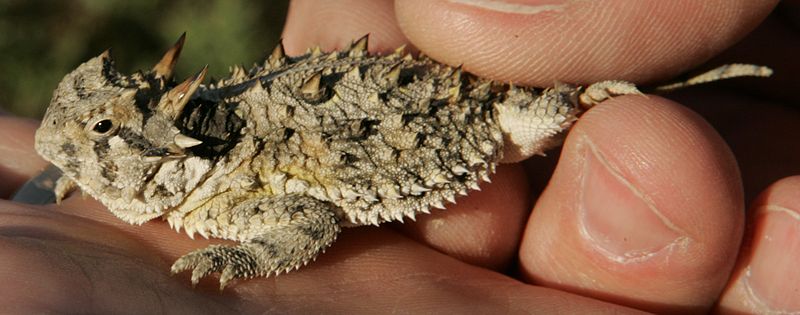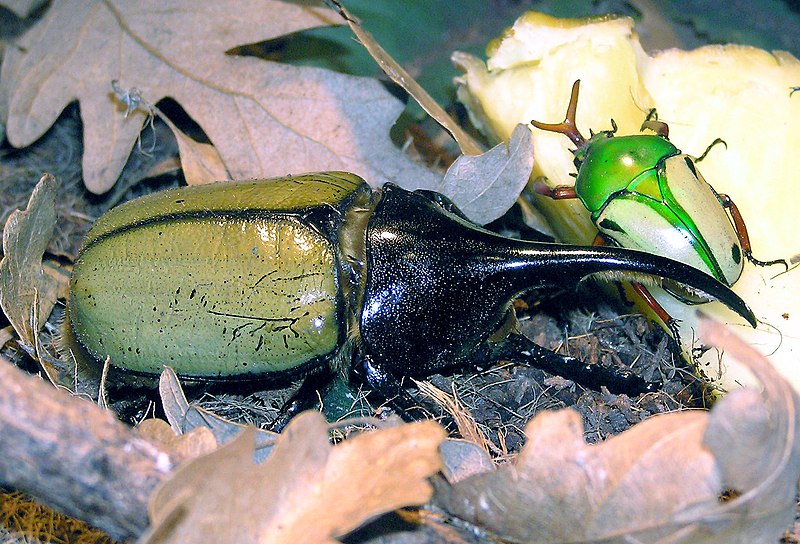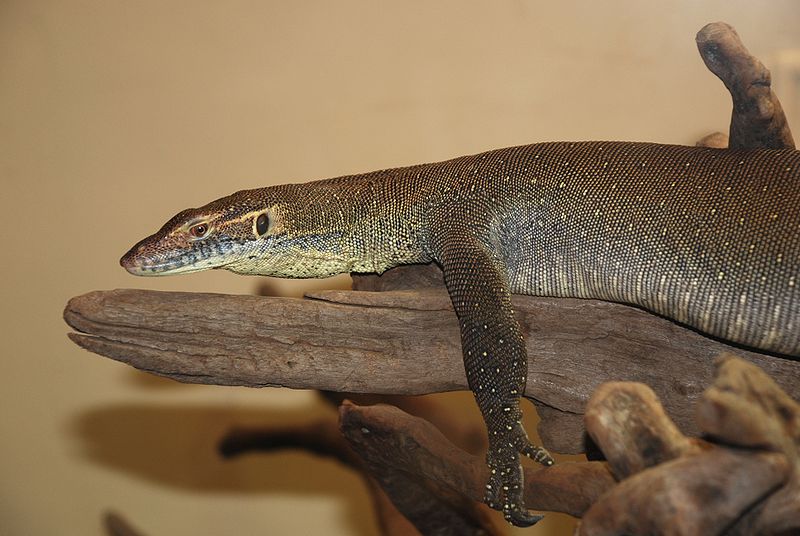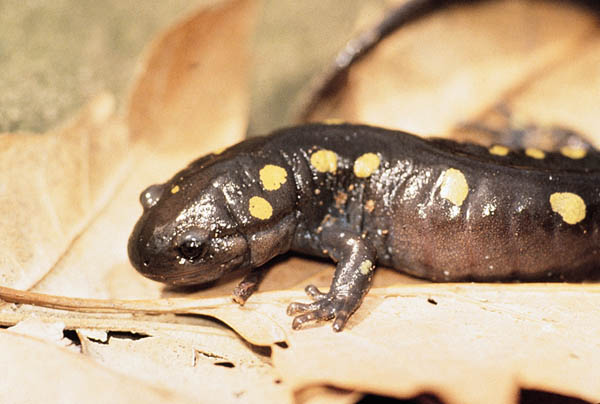 Horned Lizards of various species, usually sold as “Horned Toads”, were US pet trade staples in the 1950’s and 60’s. Looking much like minute dinosaurs, they needed more heat and UVB than most could provide, along with an ant-dominated diet, and fared poorly. As a boy, I was able to keep them going in the summer, thanks to natural sunlight and plentiful ants, but they declined in winter (I discovered they did not like the “house ants” I collected in local stores!). As I moved into zoo work, the key to keeping most species remained elusive. So I was very happy to hear that the Los Angeles Zoo had recently (January, 2011) succeeded in breeding the largest species, the Giant Horned Lizard, Phrynosoma asio. Read More »
Horned Lizards of various species, usually sold as “Horned Toads”, were US pet trade staples in the 1950’s and 60’s. Looking much like minute dinosaurs, they needed more heat and UVB than most could provide, along with an ant-dominated diet, and fared poorly. As a boy, I was able to keep them going in the summer, thanks to natural sunlight and plentiful ants, but they declined in winter (I discovered they did not like the “house ants” I collected in local stores!). As I moved into zoo work, the key to keeping most species remained elusive. So I was very happy to hear that the Los Angeles Zoo had recently (January, 2011) succeeded in breeding the largest species, the Giant Horned Lizard, Phrynosoma asio. Read More »
Stag Beetle Conservation, with Notes on Keeping Large Beetles
 Beetle-keeping is a small but expanding hobby here in the USA, but is amazingly popular in Japan, where beetle larvae are even sold in vending machines (I experienced this first-hand, and can say they survive the ordeal quite well!). Beetles are classified in the order Coleoptera, which exceeds all other animal orders in species diversity, and they play a vital role most ecosystems. Beetle conservation, however, is in its infancy, so I was very pleased to learn of new efforts on behalf of the UK’s largest species, the European Stag Beetle, Lucanus servus.
Beetle-keeping is a small but expanding hobby here in the USA, but is amazingly popular in Japan, where beetle larvae are even sold in vending machines (I experienced this first-hand, and can say they survive the ordeal quite well!). Beetles are classified in the order Coleoptera, which exceeds all other animal orders in species diversity, and they play a vital role most ecosystems. Beetle conservation, however, is in its infancy, so I was very pleased to learn of new efforts on behalf of the UK’s largest species, the European Stag Beetle, Lucanus servus.
Elusive Quarry
The European Stag Beetle (please see photo) is likely in sharp decline, but no one knows why. They are very hard to study…adults do not feed and so cannot be lured to traps, and digging for buried larvae often kills them and destroys their habitat. Read More »
Using Driftwood as a Resting Site for Aquatic Reptiles and Amphibians – Part 1
Pieces of driftwood attached to slate bases have long been used to decorate tropical fish aquariums. However, their important value to folks keeping certain semi-aquatic turtles, newts, frogs, crabs and other creatures is often overlooked. Today I’d like to highlight some interesting herp-oriented uses for driftwood.
Submerged vs. Exposed Basking Sites
While a dry basking site is important for most semi-aquatic turtles, many species prefer to use structures that are at or just below the water’s surface, and rarely expose themselves fully. Included among these are the various Mud and Musk Turtles, Common and Alligator Snapping Turtles, Softshells and many Snake-Necked Turtles (Chelodina spp.). Read More »
The Natural History and Captive Care of the Mertens’ Water Monitor – Part 2
 Please see Part 1 of this article for information about the natural history of the Mertens’ Water Monitor, Varanus mertensi, including the threat posed by introduced Marine Toads, Rhinella marinus.
Please see Part 1 of this article for information about the natural history of the Mertens’ Water Monitor, Varanus mertensi, including the threat posed by introduced Marine Toads, Rhinella marinus.
Cage Size and Style
Mertens’ Water Monitors may be the ideal choice for folks interested in keeping larger monitors, but who lack the room for the true giants. Averaging 3.5 feet in length, they are supremely-adapted predators, hunting equally well on land or in the water. I’ve found that their alertness and aggression when hunting rivals that of any monitor I’ve observed, including the famed Komodo Dragon (keep your fingers out of their cage at feeding time!). Read More »
2010’s Amphibian Discoveries – New Species and New Information – Part 2
 Global amphibian declines and extinctions spurred herpetologists to pay special attention to frogs, salamanders and caecilians in 2010. In Part 1 of this article, I reported on the discovery of several new species, and the re-discovery of a few that had not been seen for decades. Today we’ll look at interesting findings concerning a well-known salamander that houses algae in its cells and a rarely- seen species that lives for over 100 years.
Global amphibian declines and extinctions spurred herpetologists to pay special attention to frogs, salamanders and caecilians in 2010. In Part 1 of this article, I reported on the discovery of several new species, and the re-discovery of a few that had not been seen for decades. Today we’ll look at interesting findings concerning a well-known salamander that houses algae in its cells and a rarely- seen species that lives for over 100 years.
Algae in Salamander Cells
It’s long been known that algae growing within the egg masses of Spotted Salamanders, Ambystoma maculatum, provides oxygen to the embryos and utilizes their waste products. In 2010, however, Dalhousie University (Canada) biologists shocked the herp world by announcing that they had found living algae within Spotted Salamander cells, functioning as it does in the egg mass. This is the closest known association between a vertebrate and a plant, mimicking in some ways the relationship between algae and coral. Read More »
 That Reptile Blog – Reptile, Amphibian and Exotic Pet Care and Information
That Reptile Blog – Reptile, Amphibian and Exotic Pet Care and Information
